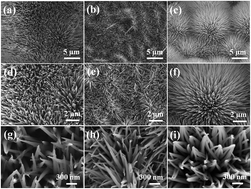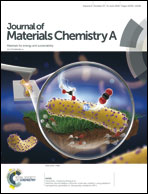Effect of cation substitution on the pseudocapacitive performance of spinel cobaltite MCo2O4 (M = Mn, Ni, Cu, and Co)†
Abstract
Cation substitution is a promising strategy for modulating the structural properties and optimizing the electrochemical performance of spinel cobalt oxide (Co3O4); however, the underlying mechanism of this action induced by different cation substitutions has not yet been clearly addressed. Herein, a systematic investigation is performed to elucidate the effect of cation substitution on the pseudocapacitive performance of spinel cobaltite (MCo2O4; M = Mn, Ni, Cu, and Co) mesoporous nanowires grown on nickel foam (NF). Theoretical and experimental analyses reveal that the substitution of Co by transition metals (i.e., Mn, Ni, and Cu) in the lattice of Co3O4 can simultaneously improve charge transfer and ion diffusion, thereby exhibiting enhanced electrochemical properties. Herein, as a representative example, MnCo2O4 achieves a high specific capacitance of 2146 F g−1 at a current density of 1 A g−1, while 92.1% of its initial capacitance is retained after 5000 cycles. An asymmetric supercapacitor with MnCo2O4 as the positive material and activated carbon (AC) as the negative material delivers a high energy density of 56.1 W h kg−1 at a power density of 800 W kg−1, and a favorable energy density of 29.3 W h kg−1 at a power density as high as 8000 W kg−1.



 Please wait while we load your content...
Please wait while we load your content...